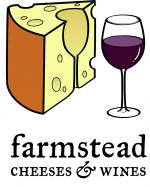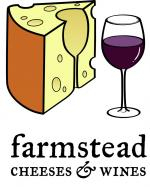Sine Qua Non Syrah
We get minuscule amounts of Sine Qua Non wines every once in a while – one or two bottles per every so often. These high-scoring gems are impossible to find – the list to get on their waiting list is over ten years and counting, and a few hundred bottles make it to retail shelves per year, with retailers jacking up the prices by sometimes double their cost.
Sine Qua Non (commonly abbreviated as SQN) is a California winery that is known for its wines made from blends of Rhône grape varietals, a tendency to avoid repetition and very limited production of wines that are difficult to obtain. Each release is allocated and directly sold to a carefully managed mailing list of customers. The winery is located in Ventura County and was founded in 1993 by Austrian Manfred Krankl, who emigrated to the USA in 1980.
The name of the winery, Sine Qua Non, is a Latin phrase that can be translated as “absolutely indispensable”. The wines themselves are given frequently changing names , and the bottles are unusually shaped with distinctive labels featuring Manfred Krankl’s own artwork.
The Krankls began making their own wines in 1994 due to personal interest and with the added benefit of being able, if the wines were good enough, to sell them to the successful Mediterranean-themed Los Angeles restaurant Campanile, which Manfred co-founded and managed.
Beginning with several self described “project wines” made in partnership with John Alban and other vintners, initial production was approximately 100 cases. After several experiments with white varietals, Rhone red varietals, and even Pinot noir, the Krankls found their sweet spot in 1994 with a predominantly Syrah-based blend they named Queen of Spades that earned a 95-point rating from Robert Parker. Today, this wine retails at an average price of $5,861 per bottle.
Manfred was also a co-founder of La Brea Bakery. Sale of a portion of his ownership position in LaBrea enabled him to focus on wine-making full-time, at which point total production, diversity of releases, and competency with the full spectrum of Rhone (and other) varietals steadily increased. Sourcing fruit from a wide variety of growers from year to year, and increasingly from their own vineyards has caused the winery to never make exactly the same wine twice, about which Krankl has said, “People buy Sine Qua Non. They don’t seem to give a toot where it’s from”. However, beginning with 2020, 100% of the grapes will come from from SQN-owned vineyards.
A tradition at Sine Qua Non has been that each wine has a distinct name, label, and often bottle style. Each label is designed by Manfred, often with linocut artwork of his own creation. However, in 2021 SQN announced that due to the difficulty of registering new names, which has sometimes required renaming a wine before release, in the future there will no longer be unique names for each bottling.
Sine Qua Non’s Syrahs were among the first American Syrahs to create significant interest and trading volume in the global wine auction market. From the second quarter of 1999 to early 2008, the value of SQN wines at auctions appreciated by 163% in contrast to the 128% appreciation rate during the same period of other collectible wines listed on the Wine Spectator Auction Index. In 2015, three half bottles of the 2002 Sine Qua Non E° (a rosé, which is not typically a wine type that attracts high prices at auction), sold for a total of $4,200.
In other words kids, these wines are the real deal.
2017 – Hated Hunter
100 points, Jeb Dunnuck Named after Manfred’s grandfather, the 2017 Syrah The Hated Hunter is 82.4% Syrah, 7.8% Petite Sirah, 5.2% Mourvèdre, 2% Grenache, and the rest a mix of white varieties that spent just over 23 months in 59% new French oak. A classic 2017, it has an incredible nose of spice red and black fruits, ground pepper, dried flowers, and sandalwood. With full-bodied richness, no hard edges, gorgeous purity of fruit, and a finish that won’t quit, it has everything you could want from a bottle of wine. This cuvée comes from a mix of the The Twin, Eleven Confession, Cumulus, and Molly Aida vineyards, and was bottled in August of 2019, with 1821 cases produced.
2016 – Ratsel
100 points, Jeb Dunnuck: The 2016 Syrah Rastel 16 showed incredibly from barrel and it certainly doesn’t disappoint from bottle. Pure perfection in Syrah, this beauty boasts a deep purple hue as well as a stacked bouquet of ripe blackberries, cured meats, scorched earth, white pepper, white chocolate, and bacon fat. Deep, full-bodied, and massively concentrated, it builds incrementally on the palate, with ultra-fine tannins, perfect balance, and a finish that won’t quit. I struggle to think of another wine that delivers this level of intensity without any sensation of weight or heaviness. The 2016s, in general, are relatively approachable, but nevertheless, do your best to hide bottles for 3-4 years.
2015 – Trouver l’Arene

